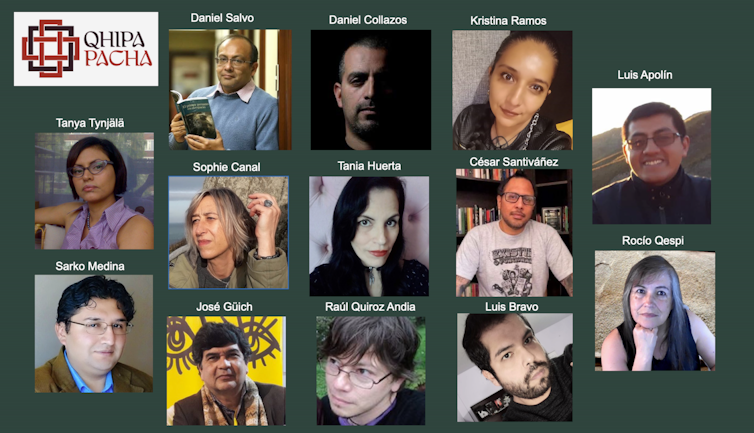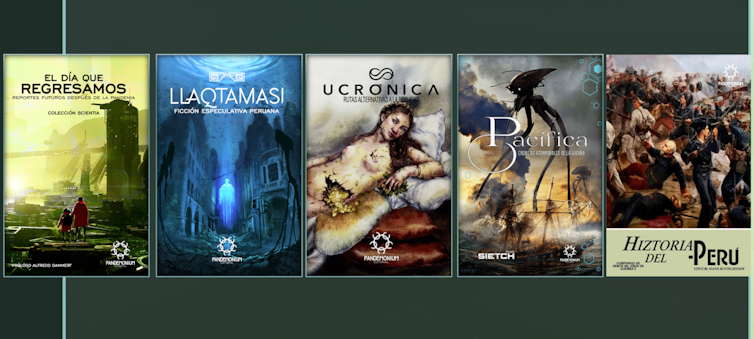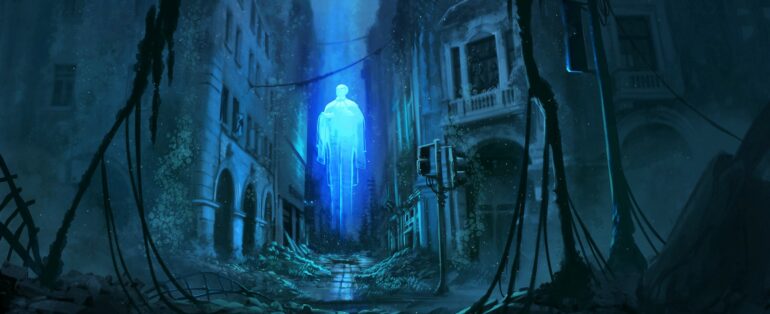The Aymara people of the Andean Highlands speak of “qhipa pacha,” a phrase that refers to the future as a direction one walks to backward. They believe in looking to the past as a way to understand what may come next.
Last year, 13 Peruvian writers launched the Qhipa Pacha Collective, a literary initiative which “aims to recover the memory of our original peoples to build possible worlds.” These writers imagine futures that reflect Peruvian ideas and concerns about their past and present.

Peruvian speculative fiction writers and members of Qhipa Pacha.
Rocío Quispe Agnoli, CC BY-ND
My teaching and writing focuses primarily on Peruvian literary history and realism, a style that has been predominant since the 19th century. Recently, I’ve grown interested in Latin American writers who explore an imagined future through speculative fiction.
This approach isn’t simply science fiction written in Spanish and set in Peru. It’s a genre rooted in respect for both Peru’s ancestral memory and attention to present-day societal issues.
Writing to mirror society
In Spanish, the verb “especular” relates to optics, such as a reflection in a mirror. As in English, it also means to speculate – or observe the world attentively and think about it inquisitively. Both meanings inform the term “speculative fiction.”
Speculative fiction is a broad field that encompasses works of fantasy such as “The Lord of the Rings”, horror like “The Exorcist,” the supernatural as in “Stranger Things,” dystopia such as “The Hunger Games” and science fiction like “2001: A Space Odyssey.” Often, speculative genres have been considered escapist or not serious. Yet, when addressing social, political, economic and climate conflicts and projecting them into the future, speculative literature offers a new way to understand the consequences of the past and the concerns of the present.
Futurism is also a type of speculative fiction. At the center of Peruvian futurism are characters of Spanish, Indigenous and African descent. The stories feature Native technologies like quipus or “talking knots”, an ancient system for recording and transmitting information, and “andenes,” or agriculture terraces. They highlight Inca beliefs about the natural world and astronomy.
In such works, fantasy ceases to be an evasion of reality and becomes a critical reflection of our relationship with the world and ourselves, writes César Santivañez, the editor of a collection of Peruvian speculative fiction, in the prologue of the book.

Titles of several Peruvian speculative fiction books.
Rocío Quispe Agnoli
Fiction grounded in Peru’s history
In 1843, Julian del Portillo published two serial novels that imagined the cities of Lima and Cuzco 100 years into the future. But modern Peruvian futurism stories offer more than science fiction starring Peruvian…



